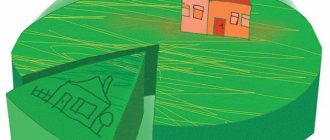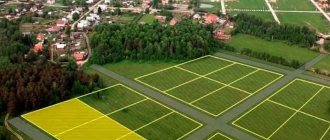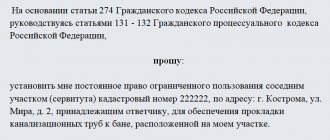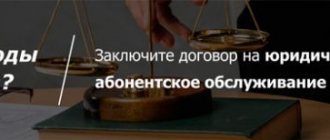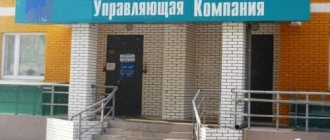Legal provisions
By virtue of paragraphs. “I.2” clause 8, part 1, art. 58 of Law N 212-FZ for organizations using the simplified tax system, the main type of economic activity (in accordance with OKVED (OK 029-2001)) of which is real estate management, during the transition period 2011-2027 there are reduced rates of insurance contributions from payments and other remuneration to individuals.
According to clause 3.4 of Art. 58 of Law N 212-FZ during 2012-2018, these insurance premium payers apply the following insurance premium rates: in the Pension Fund of the Russian Federation - 20%, in the Social Insurance Fund - 0%, in the Federal Compulsory Medical Insurance Fund - 0%.
Important addition. Several significant changes came into force on January 1, 2014:
— Federal Law No. 333-FZ of December 2, 2013 extended the period of application of the preferential tariff for insurance premiums until 2020 (updated version of Article 58 of Law No. 212-FZ);
— in accordance with Federal Law dated December 4, 2013 N 351-FZ, payment of insurance contributions for compulsory pension insurance (starting from the billing period of 2014) is carried out by a single settlement document sent to the Pension Fund of the Russian Federation to the corresponding accounts of the Federal Treasury, using the BCC (in 2013 and 2014, it is the same), intended to account for insurance contributions for the payment of the insurance part of the labor pension. The amount of insurance contributions for compulsory pension insurance to finance the insurance and funded parts of the labor pension in relation to insured persons is determined by the Pension Fund independently on the basis of individual (personalized) accounting data in accordance with the pension option chosen by the insured person.
In accordance with section. OKVED group 70.32 “Real estate management” includes two subgroups: 70.32.1 “Management of the operation of housing stock” and 70.32.2 “Management of the operation of non-residential stock”.
According to Part 1.4 of Art. 58 of Law N 212-FZ, the corresponding type of economic activity provided for in paragraph 8 of Part 1 of this article is recognized as the main type of economic activity, provided that the share of income from the sale of products and (or) services provided for this type of activity is at least 70% in total income. In this case, the amount of income is determined in accordance with Art. 346.15 Tax Code of the Russian Federation.
Some experts believe that a “simplified” HOA has the right to apply reduced insurance premium rates only if it classifies as taxable income payments by apartment owners for maintenance and repairs, as well as for utility bills. In arbitration practice, it is quite rare, but such an interpretation of the law still occurs. For example, the Resolution of the FAS UO dated September 27, 2013 N F09-10040/13 supports the conclusion that the disposition of Art. 58 of Law No. 212-FZ corresponds with the disposition of Art. 346.15 of the Tax Code of the Russian Federation, from which it follows that the preferential tariff provided for in Art. 58 of Law N 212-FZ, can only be applied when calculating insurance contributions to the wage fund, the source of financing of which was the taxable income of a business entity. Similar conclusions were made in the Resolution of the Seventeenth Arbitration Court of Appeal dated May 20, 2013 N A50-18174/2012. These clarifications are all the more surprising considering that in other decisions the same courts make absolutely opposite conclusions.
In practice, many partnerships, in accordance with the accounting policies they apply, recognize mandatory payments by their members, which are associated with the payment of expenses for the maintenance, current and major repairs of common property in apartment buildings, as well as with the payment of utilities, target revenues that are not subject to a single tax when applying USNO. Do they thereby deny themselves the opportunity to apply lower tariffs? The author claims no. In a number of court decisions (decrees of the FAS UO dated July 23, 2013 N F09-5561/13, dated February 14, 2013 N F09-2/13, FAS MO dated September 25, 2013 N A41-50078/12, the Seventeenth Arbitration Court of Appeal dated August 20. 2013 N A50-23309/2012) when considering cases when all funds received from homeowners are taken into account by the HOA as taxable revenue and are not classified as targeted revenues excluded from income on the basis of Art. 251 of the Tax Code of the Russian Federation, the judges specifically drew attention to the fact that:
- if the HOA reflects all payments received to it from the owners of premises as targeted revenues, its right to the benefit is not lost, since these revenues (being received and reflected in tax reporting) will also be classified under OKVED code 70.32;
— the bodies of the Pension Fund are not controlling in the field of taxation and do not provide evidence of incorrect formation of the revenue part of the single tax base.
Let us highlight two positions on the issue of calculating the share of income from “preferential” types of activity.
HOA Taxation: What type of taxes is a partnership subject to?
The modern state taxation system provides for the following taxes in HOAs:
- collection from profits received;
- value added tax;
- property;
- land;
- transport.
What taxes the HOA pays needs to be discussed separately.
Profit taxation implies that the HOA is engaged in certain income-generating activities. Incoming funds enable the relevant authorities to understand whether the community can be considered a full-fledged payer.
The fact is that it is the revenue of the HOA that must be included in the tax base. The definition of target revenues is prescribed in the Tax Code of the Russian Federation in article number 251. In fact, these are payments received from the participants of the partnership.
This also includes contributions towards regular maintenance and repairs of property owned by the community. This money is not subject to fees.
Owners of an apartment building who are not members of the HOA pay only housing and communal services. Their contributions are not considered targeted.
The Civil Code of the Russian Federation allows the partnership to conduct commercial activities. But with the condition that it is aimed at using joint property. This may apply to premises in an apartment building, as well as adjacent areas.
The listed activities bring profit to the company. Cash is income. Therefore, they pay contributions to tax institutions, since finance is the taxable base.
This fee involves payments in two parts. One is the regional level, and the other is the federal level. The current rates are equivalent to two and eighteen percent.
Value added tax is imposed on actions involving the sale of goods and services in any region of the Russian Federation.
As in the previous case, VAT is not imposed on any transactions or activities that are associated with the receipt of targeted funds. This also does not include utility bills.
If the HOA acts independently when providing housing and communal services, without resorting to the services of contractors, then payments will be subject to VAT.
In the vast majority of cases, the rate here will be the same as throughout Russia, namely 18%.
Property fees
It is worth emphasizing here that there is a distinction between the property of the partnership itself and the property of its participants. The apartment building in this case will not be the property of the community, since the owners here are the holders of rights to residential real estate.
The tax base will concern not only the book value, but also the cadastral value of the property. The rate regulator in this case is regional government bodies.
Some regions are switching to tax bases based on cadastral value. If the region has done this, then the tax is deducted, even if the organization has chosen a simplified taxation system.
Land taxes
These fees only apply if the HOA owns land.
Here the tax base will be calculated based on the cadastral value.
The rates are regulated by municipal authorities.
Transport tax
If the organization has motor transport on its balance sheet, it will have to pay this fee. The role of rate regulator here is played by regional authorities.
The share is calculated only based on the taxable income of the HOA
In other words, income from real estate management should be considered income taken into account for tax purposes. If the HOA identifies owner payments for maintenance, repairs, and utilities as earmarked revenue, then such payments should not be included in the calculation of the revenue share for purposes of applying reduced insurance rates. The validity of this approach is reflected, for example, in the Decision of the Arbitration Court of the Perm Territory dated December 11, 2013 N A50-18921/2012.
What amounts are included in the calculation? This is, for example, income from the rental of common property, interest on deposits, penalties for late payment by consumers of the appropriate fee, etc. Looking ahead, let’s imagine how section will be filled out. 3.6 (since 2014 - section 3.5) of the RSV-1 calculation of the Pension Fund of Russia:
1) in conditions where the HOA does not consider the receipts from apartment owners for maintenance and repairs, payment for utilities to be targeted:
Income from rental of common property
By virtue of paragraphs. 1 item 2 art. 137 of the Housing Code of the Russian Federation HOAs have the right to provide for use or limited use part of the common property in the apartment building. According to paragraph 2 of Art. 152 of the Housing Code of the Russian Federation, leasing, renting part of the common property in the house refers to the economic activity of the HOA. But should such income be classified as income from real estate management activities? There are no official clarifications, and there are different opinions locally.
Clarifications from various departments. The author has at his disposal the response of the Ministry of Health and Social Development in 2012 to a private request from an insurance premium payer. In it, the department explained that for the purpose of applying Part 1.4 of Art. 58 of Law N 212-FZ, income from the rental of common property in apartment buildings refers to income from the activities of the HOA in managing real estate. At the same time, in 2014, in response to a similar request from another payer of contributions, it was recommended to address the question of classifying activities for leasing common property in MKD to one or another OKVED code of the Ministry of Economic Development.
In turn, the author is familiar with the explanations of the statistical bodies, agreed with the Ministry of Economic Development, that the activities of horticultural, vegetable gardening and dacha non-profit associations, which consist in the management of real estate belonging to them (land, wells, water supply, fences, public houses, etc. .), supervision over its condition and operation, collection of rent, etc., which is carried out by boards elected by citizens, refers to code 70.32.2 “Management of the operation of non-residential assets” OKVED.
Obviously, the activities of HOAs should be qualified in the same way.
Arbitrage practice. In most cases, judges state that income from the provision of parts of common property for the use of third parties forms in the HOA income related to the management of real estate (code 70.32 OKVED).
In addition, in the Resolution of November 22, 2013 N F09-12625/13, the FAS UO refuted the arguments of the Pension Fund Administration (UPFR) that the income received by the HOA under lease agreements should be attributed to the provision of intermediary services in the purchase, sale and rental of real estate property (code 70.31 OKVED), and not for real estate management, and income from leasing advertising space on the facade of a building - for advertising activities (code 74.40 OKVED), which do not give the right to apply reduced rates of insurance premiums. The court reasoned as follows: in accordance with OKVED, the group “Real Estate Management” (code 70.32) also includes the type of activity “Management of the operation of housing stock” (code 70.32.1). In turn, this type of activity includes the subtype “Activities of institutions for collecting rent for the operation of housing stock.” Thus, since the HOA is taxable under Art. 346.15 of the Tax Code of the Russian Federation, income from managing the operation of the housing stock and the requirements of Art. 58 of Law N 212-FZ, it lawfully applied a reduced rate of insurance premiums. According to the charter of the partnership and an extract from the Unified State Register of Legal Entities in relation to the HOA, the information on the types of economic activities of the latter does not include intermediary and advertising activities. In this regard, the activities of HOAs in leasing the common property of homeowners are included in group 70.32 “Real Estate Management” and do not require independent classification into other OKVED groups.
Local attempts by the UPFR to classify the activity of leasing common property in MKD as OKVED code 70.20 “Rental of own real estate” should also be considered untenable. Thus, in the Decision of the Arbitration Court of the Khabarovsk Territory dated April 1, 2013 N A73-14622/2012, it is noted that the common property in the apartment building is in the common shared ownership of the owners of residential premises. And if the HOA receives income from the rental of this property, then it should be identified in accordance with code 70.32 “Real Estate Management”. In order to document the illegality of the application of “preferential” tariffs, the UPFR must provide evidence that the HOA as a legal entity has property that belongs to it by right of ownership, leases it out, and the share of income received on this basis exceeds 70% of the total income of the HOA.
Thus, income from the rental of common property participates in determining the share of income that ensures the application of preferential insurance rates, and is shown both in line 361 and in line 362 of section. 3.6 (since 2014 - section 3.5) of the RSV-1 Pension Fund form.
Taxation under the simplified tax system
A homeowners association is a non-profit company, an association of apartment owners in an apartment building for the purpose of general management:
- common property in the house;
- property of apartment owners in several buildings.
Also, the partnership is created to ensure:
- use and disposal of common property;
- carrying out work to maintain and ensure the safety of this property;
- provision of public services;
- to carry out other activities.
Naturally, the leaders of such associations are interested in how the taxation of HOAs will be carried out under the simplified tax system in 2016-2017. Let's try to understand this issue.
An HOA can switch to a simplified regime at its own discretion. To switch to it from the general regime, you must write an application to the tax authorities.
The time within which this needs to be done depends on the tax regime in which the company is currently located.
But these rules only apply to already operating organizations. Newly registered companies must submit such an application within thirty days of registration.
It is worth remembering that not all interested companies can operate on the simplified tax system. Homeowners' associations have the right to switch to a simplified regime, but only if all the conditions for the transition are met. To transfer you need:
- the average number of employees is less than one hundred people;
- the residual value of the organization's assets is no more than one hundred million rubles;
- profit no more than sixty million rubles.
Other taxes
If an HOA has switched to a simplified system, this does not mean that it should not pay other taxes. When using the simplified tax system, there is no need to pay only three taxes:
- company property tax;
- income tax (except for tax paid on dividends);
- VAT, excluding tax payable:
- when importing products into Russia;
- when conducting activities under a partnership agreement;
- due to the fulfillment of the obligations of a tax agent.
The remaining taxes are paid by simplified residents in the same manner as by general regime residents.
Now let's look at how an HOA using the simplified tax system should take into account its income.
The responsibility to pay for home repairs and its maintenance falls on all residents of the house (both HOA members and ordinary residents). Tax accounting of funds received is directly dependent on who paid.
Funds received from HOA participants are membership fees for the internal needs of the partnership. For tax accounting purposes, such contributions are designated revenues. They are not subject to the simplified tax system, therefore, they are not included in the book of expenses and income.
If contributions are accepted from residents of the house who are not members of the HOA, they are included in income subject to taxation, since they do not qualify for benefits.
If donations come from HOA members, they do not need to be included in income. Therefore, they are not subject to taxation. If a third-party organization performs any work for the HOA free of charge, their price is not included in taxable income.
All citizens, as well as organizations, must pay utilities and accommodation on time from the time they began living in the apartment.
The financial department considers such payments to be sales revenue. In this regard, there is no need to take it into account when calculating the simplified tax system.
According to officials, such revenues should be taxed because they are not earmarked.
It only acts as an agent for those companies that provide these services. In this case, the HOA does not gain any financial benefit.
In this regard, the judge came to the conclusion that such payments should not be subject to simplified taxation.
In some cases, if you choose not to take the above payments into account for tax purposes, you may need to prove your case in court. To do this you need to have the following documents with you:
- charter of the partnership (to confirm the implementation of non-commercial activities);
- cost and revenue estimates;
- invoices confirming payment of utilities;
- accounting documents (to confirm the intended use of money);
- an internal document that regulates the procedure for maintaining separate accounting.
Even though a partnership is a non-profit company, it has the right to carry out business activities and earn money. However, the list of such activities that the partnership has the right to engage in is limited. An HOA can only engage in:
- maintenance and repair of apartments in multi-apartment buildings;
- construction of additional rooms in apartment buildings;
- rental of apartments in multi-apartment buildings.
Income from this activity forms additional income for the partnership. Also, a partnership can engage in entrepreneurial activities if its members include plumbers, mechanics and electricians. The price of services must be defined in an internal document.
Income from such activities must be included in the tax base of the simplified tax system.
Partnerships using the simplified regime can take advantage of the reduction factor, but to do this, one requirement must be met.
Profit from property management should be more than 70% of all income. This means exactly those incomes that are taken into account during simplification.
From this we can conclude: a partnership can pay insurance premiums with a reducing coefficient if it is on a simplified basis and receives taxable income from managing an apartment building.
If the partnership exists only through targeted payments, it cannot apply a reduction factor and must pay contributions at regular rates.
It is worth noting that when using the income-expenses tax base, insurance contributions can be included in expenses. You do not need to fulfill any special requirements for this. In this regard, they can be written off immediately after payment.
When using the income tax base, the partnership can reduce the tax by 50% of the amount of insurance premiums.
It must enter into an intermediary agreement with the residents of the house for the provision of services, and then sign an agreement with utility organizations for the receipt of services.
When carrying out statutory activities, as well as entrepreneurial activities, the partnership is required to maintain separate records.
Interest and penalties
Such income of HOAs, such as interest on deposit agreements and penalties for late payment of housing and communal services, in the opinion of judges, do not relate to income from real estate management activities (Resolution of the Federal Antimonopoly Service UO of February 14, 2013 N F09-2/13, Seventeenth Arbitration Court of Appeal dated 08/09/2013 N A50-17099/2012, Decision of the Arbitration Court of the Perm Territory dated 12/11/2013 N A50-18921/2012).
Therefore, they are reflected in line 361 of section. 3.6 (since 2014 - section 3.5) of the calculation of the RSV-1 Pension Fund as part of total income and are not indicated on line 362 of this section of the form.

